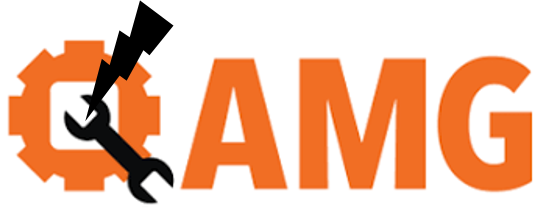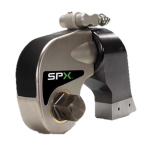Prior to deep diving into how hydraulic torque wrench work, let us better understand torque wrenches in general.
Torque wrenches are used to fasten or loosen bolts and screws.
They play an important role where tightness is a crucial factor. They are designed to apply a measured torque to attain the desired tightness of bolts.
Know Your Hydraulic Torque Wrench
A hydraulic torque wrench is an advanced version of the traditional handheld torque wrench.
A hydraulic torque wrench is a device with calibration that can measure the torque applied to fasten and attain the desired tightness or loosen a bolt. It was invented by George A Sturdevant in 1968. Since then, they are used in a cross-section of industries prominent among which are transportation, field erections and oil and gas explorations. Hydraulic torque wrenches are used on well-lubricated bolts or fasteners.
Hydraulic torque wrenches are lightweight and have quiet operations compared to their pneumatic counterparts. These wrenches are highly accurate to the extent of +3% and also have prolonged usability. They are ideal for industries and application where large bolts are used with high degree of torque accuracy.
Knowing Types and Mechanisms
Hydraulic torque wrenches can be of 2 types – square drive and low profile. Each of these are designed depending on the specified area where they are to be used.
Torque is the product of the turning force applied on a bolt and the distance from the center of the object twisted to that of the tool. The product of the force and distance is measured in pound feet or Newton meters.
Hydraulic wrench torques are set apart from other powered wrenches because of the way that they operate.
- These wrenches produce torque using only hydraulic pressure.
- They have a self-ratcheting mechanism
- They include a system that can measure the torque applied with precision.
The working of a hydraulic torque wrench
To understand how the hydraulic torque wrench works, it is important to keep in mind the fact that its working principle is based on Newton’s Law that for every force applied, there is an equal and opposite reactive force. When the wrench is placed on a nut or bolt and turned, there is a tension in the opposite direction that acts as the clamping force pulling the bolted components in the same direction with a definite tension or load. As the torque increases, the joint integrity gives way to loosen or fasten the bolt. The amount of torque needed to fasten or loosed depends on the length, size and type of joint, quality of the fastener and the lubricant used in it.
Hydraulic torque wrenches are designed to fit different height and width of joints and their respective nuts. This offers easy and free movement without interference of surrounding parts.
- Force is applied on the bolt using a hydraulic tensioning device or the hydraulic stud bolt tensioner.
- This device consists of a high-pressure hydraulic cylinder and accessories that are compatible with bolt and designed to fasten the grip.
- The measured hydraulic pressure that is applied, extends to the cylinder piston taking it against the puller that in turn pulls or stretches the bolt.
- Once the applied force exceeds that of the preload tension of the bolt, and that which is needed for its relaxation, it is run down tightening it against the joint.
- In the next step, hydraulic pressure is released preventing the fastener from returning to its previous position by the tightened nut.
- The tension that is applied is measured in kN.
- The reaction member of a hydraulic torque wrench is its most dangerous part. It abuts against the stationary object stopping the wrench from turning the fastener around.
Best ways to use the hydraulic torque wrench for optimal results
There are specified ways in which a hydraulic torque wrench must be used to maintain safety. Like most advanced tools, hydraulic torque wrenches operate optimally when certain parameters are applied following safety precautions.
- Wearing safety gear like gloves and googles are a must when working with a hydraulic torque wrench. It is also important that you wear a coat/apron to give yourself proper cover that will take care of any jewelry or hanging objects.
- It is important that you run the wrench at least twice at the highest scale before applying it. This will help you determine if the moveable parts are running with their proper motion and in the desired direction.
- Any hydraulic torque wrench should be firmly held by its handle and not by the hose or aligned connections.
- Make sure to keep your hands away from the reaction bar or the boot.
- As you apply the torque, use a pulling motion, not pushing.
- Do away with all cracked or worn sockets as they may break, damage the nut or result in greater disasters.
- Maintain a good distance from the socket and protect yourself in case of an accidental break.
- Applying tension that exceeds calibrated range is an absolute no as it not only leads to instrument malfunction but is also likely to result in accidents.
- It is vital to have your hydraulic torque wrench recalibrated at least once a year. In case of a drop, make sure to recalibrate it before using it again.
- Using a cheater bar to leverage yourself runs the risk of both damaging the torque wrench and getting incorrect readings.
In case you have more queries about how hydraulic torque wrenches work, feel free to contact us and get more details.



